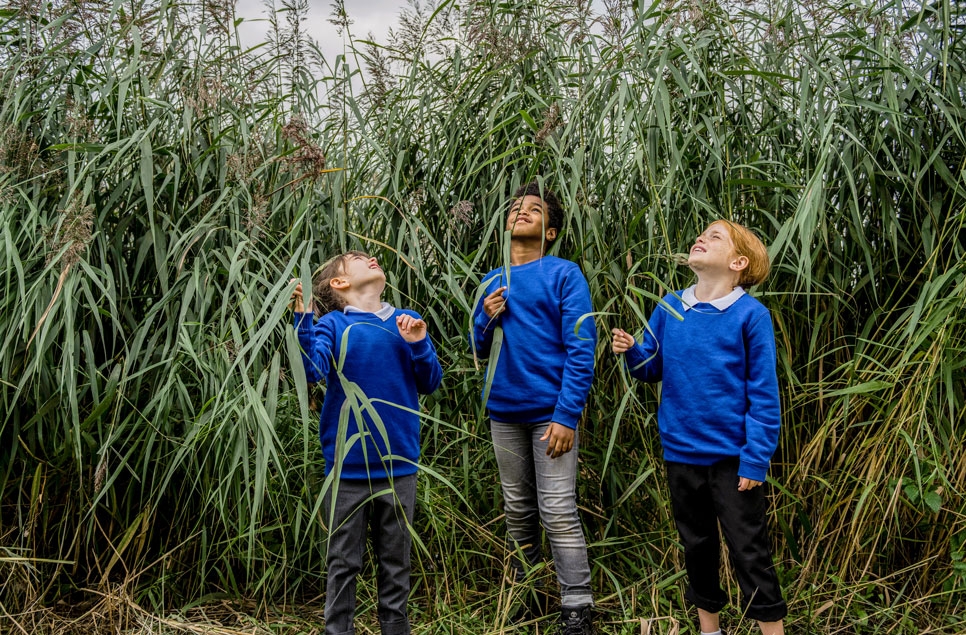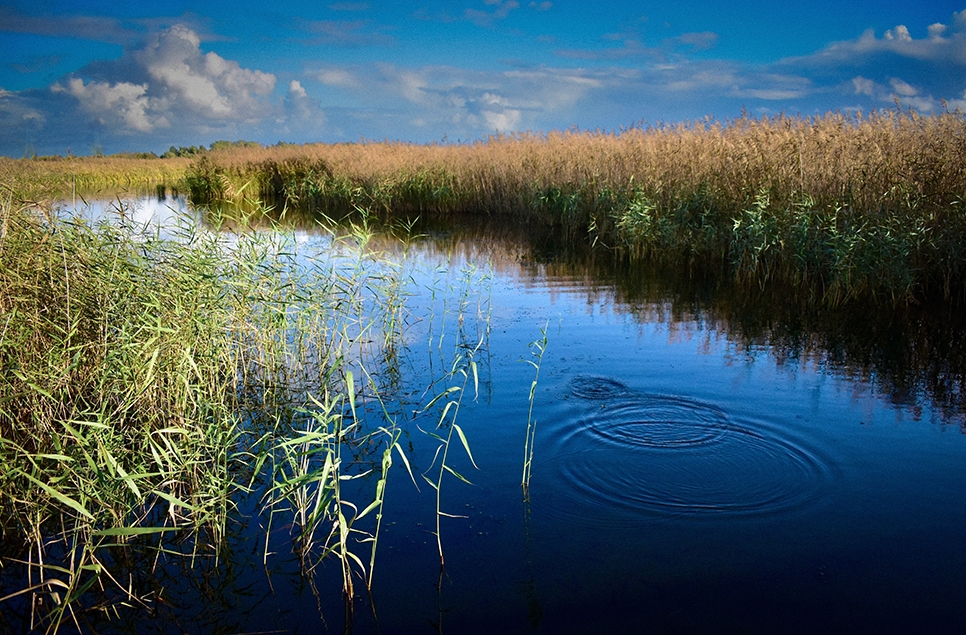Walk on the wild side: the best walks around our wetland centres
With glorious views everywhere you turn and a harmonious soundtrack of birdsong, our wetland centres are ideal spots for a stroll. And if you’re taking a staycation near any of our sites, you'll want to stretch your legs in the surrounding areas too.
With glorious views everywhere you turn and a harmonious soundtrack of birdsong, our wetland centres are ideal spots for a stroll. And if you’re taking a staycation near any of our sites, you might want to plan some routes in the surrounding area too.
After all, walking is fantastic for your health and mental wellbeing – our President Kate Humble swears by it. It's a peaceful activity we all got into over lockdown and won't be in a hurry to give up anytime soon. It's also a great sustainable form of transport if you're visiting our centres and don't want to use your car - many of the routes below go straight to our doors.
With that in mind, we asked our site and marketing managers for their pick of the most iconic walks either at our centres or leading up to them. From serene riverside trails to spectacular seaside promenades, here are the best places to explore on foot in the wider site area - the perfect way to extend your day out.
Take in coastal views close to WWT Llanelli
Meander along the 21-kilometre Millennium Coastal Path while on a staycation in the southwest of Wales. This well-maintained and accessible trail brush up against WWT Llanelli, and the section around the site is particularly idyllic in summer as butterflies and bees make the most of the dazzling display of ox-eye daisies bobbing in the breeze. Running from Loughor, 4.8 kilometres east of our centre, all the way to the sand dune forest of Pembrey in the west, this traffic-free route is a safer way to travel between popular places like Burry Port's marina and Llanelli’s sweeping beach. Stop off to refuel at WWT Llanelli’s Kingfisher Kitchen with stunning panoramic views of the Bury Inlet.

Peek at the Penshaw Monument from WWT Washington
If the aim of the game is to see the show-stopping sight of migratory wading birds flocking, your best viewing point is gained by wandering along the shores of wader lake in the visitor site itself. Highlights include avocet, oystercatcher, lapwing, redshank and little ringed plover. There are also great views of the Grecian-style Penshaw Monument that towers over Herrington Country Park. There is a longer option that extends into the wider area, a 6.4-kilometre circular walk towards WWT Washington that has moderate hills, so it'll suit the hardier hikers among us.
Flock to the fens of WWT Welney
There’s enough walking to fill a full day at this special site. Make a beeline for the footpaths leading to various hides or set off on the Summer Walk (in July) to investigate the tansy beetle habitats. Come August, the 3.6km or 4.6km Lady Fen loop opens up for walks overlooking the vast, flat landscape.
Make a staycation of it by booking a few nights at our Wigeon House on Airbnb. The next morning you can follow the Fen Rivers Way, the closest section of which is between Downham Market and Ely. Park at either one of the towns (both are under a 20-minute drive from WWT Welney), then take the train to the other before returning to your car via a pretty path tracing the River Ouse.

Stroll along a serene walkway at WWT Slimbridge
The on-site Summer Walkway is an incredible walk in its own right, as it allows you to experience the wildlife-rich scenery of the Severn Estuary. Keep an eye out for amphibians and dragonflies in the new ponds as you admire the views over to May Hill and the Forest of Dean across the river.
This centre is a stone’s throw away from a path edging the Gloucester and Sharpness Canal. You can detour from the site and join the level trail at Patch Bridge, around 10 minutes on foot from WWT Slimbridge, or tackle the whole 9.7-kilometre walk between the villages of Frampton on Severn and Purton. Expect views out over the vast River Severn and lush green countryside as you wander. For a lengthier option, continue on from Purton to Sharpness Port and join the Severn Way towards Berkeley.
Get free access to the centre by staying at Bewick’s Lodge, WWT founder Sir Peter Scott’s former home. You’ll also be able to explore his personal viewing tower.

Set off to Steart Marshes for riverside roams
There’s plenty of walking to do at this working wetland in Somerset. Once you’ve covered the main trails, embark on the Bridgwater Bay Circular, a 15-kilometre journey that skirts the River Parrett, loops around the Steart Peninsula and traverses the England Coast Path before returning to the WWT Steart Marshes car park. You might be lucky enough to see roe deer and brown hares as you wander.
Fancy going further afield? The country and coast routes in the Quantock Hills are approximately 11 kilometres away – a must-visit Area of Outstanding Natural Beauty, especially during the walking festival in September.

Take to the Thames Path from WWT London
Got a couple of hours to spare before you visit our centre in England's capital? Unwind on a riverside walk along the Thames path from leafy Richmond. You’ll see such interesting sights like the Harrods’ Furniture Depository, a neoclassical building designed by William Hunt in the 1890s while taking in the urban views of the grade II listed Hammersmith bridge - the first iron suspension bridge to span the Thames, designed by William Tierney Clark in 1824. Then follow the Queen Elizabeth Walk that will finally lead to WWT London.
Follow the Flooders Trail near WWT Caerlaverock
Travel from Castle Corner to WWT Caerlaverock along this short trail. You'll walk with the sea wall on one side and an expanse of saltmarsh plants on the other. Enjoy spectacular views of our local hill Criffel and look out over the Solway towards the Lake District hills. Watch out for ospreys flying over the merse, and listen for sedge warblers and reed warblers as you walk along the boardwalk through the reedbed.
The trail can be very wet at times, so it’s worth wearing waterproof boots or wellies. Drier alternatives include a wander through the wildflower meadow on the Caerlaverock reserve, to see dragonflies, bees and butterflies.
Stay overnight at the Caerlaverock farmhouse in the centre of our wetland reserve and you’ll have time for all these walks. After cooking supper in the fully equipped kitchen you can settle in the conservatory overlooking the Folly Pond, to spend the evening watching badgers feeding just outside the window!

Check out a monastery’s remains near WWT Castle Espie
Immerse yourself in the history of Nendrum, said to be the best pre-Norman monastic site in Northern Ireland, on a 6.4-kilometre walk from this centre. The journey is just as satisfying as the destination – you’ll navigate your way through winding lanes and across a causeway to reach the remnants of a church, round tower and monks’ cells at a 5th-century monastery. As you travel from WWT Castle Espie and back, there’ll be plenty of opportunities to gaze out over the placid waters of Strangford Lough.
Immerse yourself further in the sights and sounds of wetland wildlife while enjoying the stunning views and shifting landscapes of the lake with a visit to this centre – one of the locations used in BBC 2’s Springwatch this year.
Stroll in the South Downs at WWT Arundel
You’ll skirt the winding River Arun for half of the 11.6-kilometer loop from and back to our centre in West Sussex, where you can refresh yourself in the cafe after such a long walk. For a shorter but no less beautiful walk, the reedbed boardwalk is a great route to take around the centre. Don't miss the Pelican Cove once you’re back at WWT Arundel – it’s now home to majestic Dalmatian pelicans with wingspans reaching up to 11 feet! And if you’re tired of walking, why not take a boat safari around these serene wetlands?

Visiting our wetland centres
We do ask that if you’re leaving the centre area you also take your car, as we are a charity and have only provided the free space solely for visitors to our centres.
We know that due to the remote locations it’s not always possible to get to our centres by sustainable transport, but if you would like to cycle or take public transport, you can find details of how to get to each site via these means on their web pages.



